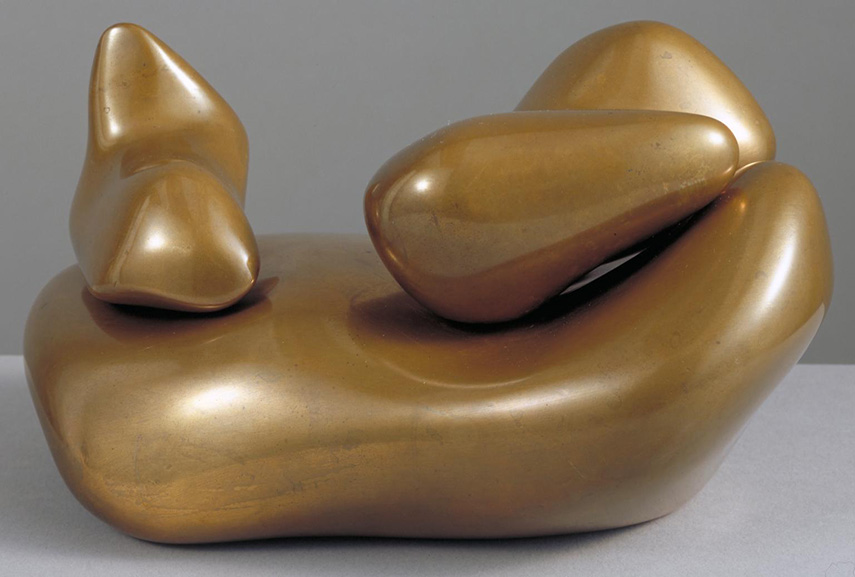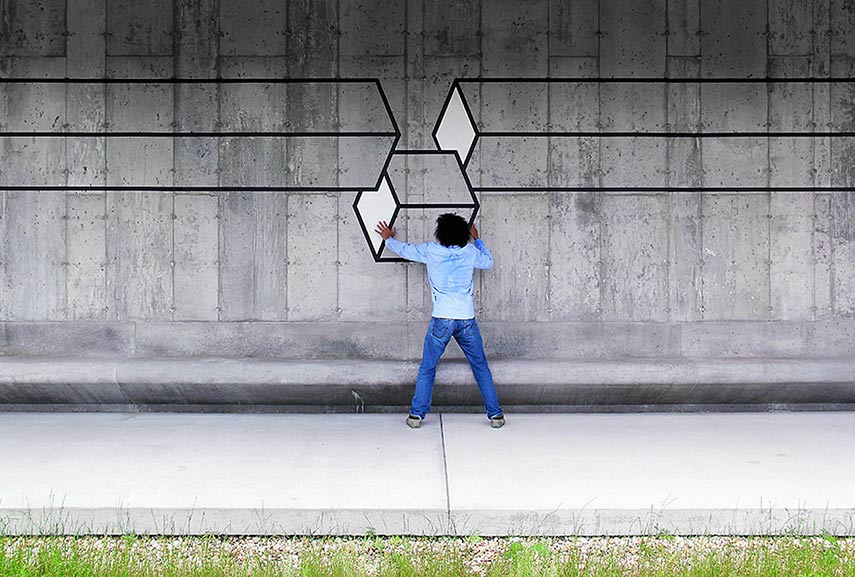Definition of Form in Art Definition of Form in Value in Art
The story of grade in art is above annihilation else a story that concerns problems of infinite, depth, light, and the construction of an illusion. As one of the elements of art , along with the line, shape, texture, value, space, and color, form in art helps artists to produce an illusion of 3D and depth on a two-dimensional surface. In contrast to the thought of a shape, which explains the nature of ii-dimensionality, form in art refers to objects which have length, width, and elevation. When shapes receive the 3rd dimension of depth, they get forms and as such a circle becomes a sphere, squares go cubes, and the triangle becomes a cone or a pyramid [ane]. When we are thinking nigh the examples of class in art, we can say that it exists in both real and implied manners. In sculptural pieces, the grade is real, while in drawing and in painting, the sensation of depth needs to exist unsaid through the use of light and the contrast of highlights and shadow areas.

Definition of Form in Art : The Ii Types
Referring to the thought that objects need to have length, width, and tiptop in order to be considered forms, the partitioning of form in art came to 2 major categories. The offset is the idea of geometric forms. These, as mentioned above, we define every bit usually man-fabricated, ie. artists use the effects of light and modeling to produce them. Attempting to paint or depict representationally, artists need to understand the furnishings of light on an object, as this helps them create an illusion of form. The light on an object is understood through highlight – the area where the low-cal direct hits the object; the mid tone as the middle tone of the color on an object; the core shadow as the expanse which is shaded on the object and every bit such the darkest tone of colour, the bandage shadow which stand for the shaded effect on surrounding object and the surface due to the blocked lite, and the reflected highlight which is a calorie-free surface area of the objects due to the surrounding forms. Through this understanding of form in art, the typical ii-dimensional shapes such as a foursquare or a circle receive the third dimension and become geometric forms ie. a cone, cube, sphere, and cylinder. These forms were extremely influential on the birth of abstract art and advanced art, especially Cubism. Due to the extensive application of the cube in numerous Cubist paintings or drawings, the motility in fact, took its proper noun and became the most revolutionary period of the 20th-century fine art.
On the other hand, organic forms also have length, width, and acme just are not angular and strict in construction. They rely more than on chance and the laws which for many apply to the laws in nature itself. They are more gratuitous and random and as such no organic form tin be an identical copy of the other. These organic forms were crucial for the birth of abstract sculpture.

The Real and the Implied Surroundings
Equally we accept mentioned in the first, the give-and-take of form in fine art is also a talk apropos the surroundings and depth in art. In the sculpture subject field, the idea of form in fine art is understood without many questions, as these already inhabit the three-dimensional space of a room, gallery, or the outdoor. This is not the case when it comes to painting or drawing and many artists use this play with three-dimensionality to create mesmerizing examples of form in fine art which tease public perception. Using the notion of both positive and negative space, M.C Escher created amazing artworks which confused the eye and made information technology difficult for us to understand whether the highlight of the pieces was on the background or the shape[two]. With the help of a trompe 50'oeil technique , many authors play with the idea of perception and 3-dimensionality as well. Such images and murals produce the idea of depth within a ii-dimensional surface and play with diverse geometric or organic forms to practise so. By mastering the principles of form in art and playing with purely 2-dimensional form, artists produce amazing 3-dimensional forms on a flat canvas, paper or fifty-fifty pavement.

Famous Artists and How they Illustrate the Form in Art
Visual artists rely on the effects of light and shadow in social club to produce an illusion of three-dimensional forms. The street artist Banksy uses this technique a lot and many of his celebrated images rely on the contrast between blackness, grayness, and white. Alongside Banksy, Aakash Nihalani uses the juxtaposition between colors to produce the idea of depth[iii]. Great examples are his geometric art pieces and urban art installations which play with the perception of the eye and application of form in fine art to create contemporary trompe l'oeil images. The famous sculptor Richard Serra creates massive free-standing forms by bending flat sharp metals while Jeff Koons relies on book to create his large-calibration sculpture.
Explore Banksy's artworks on our marketplace!
Class in art needs to be understood as a story concerning space and the idea of three-dimensionality equally much as it is a tale of light and dark. Aslope perspective in art, volume, the notion of the rhythm, and contrast, form in fine art helps artists become magicians and produce magic on a two-dimensional surface.

Editors' Tip: Making Art: Form and Pregnant
This comprehensive introduction to art and design explores making artifacts as a process of making meaning. Making Art: Form and Meaning offers a framework for agreement how all the aspects of an artwork--subject matter, medium, course, procedure, and contexts--interact. The text's wide assortment of examples and its accent on belatedly-modernism and postmodern art give students a thorough look at the expressive possibilities of traditional design elements and principles and contemporary practices, including the use of computer-based, time-based, and lens-based media. With artist quotes, conspicuously defined fundamental terms, and a chapter dedicated to studio critiques, Making Fine art allows students to join the conversation of contemporary fine art and gives them a jump start in thinking and talking near their work using the language and concepts of today's art earth.
References:
All images used for illustrative purposes only. Featured image: Geometric Forms in Art. Image via thevirtualinstructor.com
Source: https://www.widewalls.ch/magazine/form-in-art
0 Response to "Definition of Form in Art Definition of Form in Value in Art"
Post a Comment